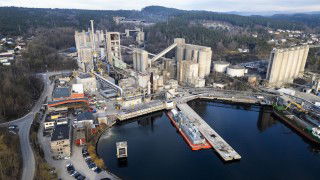A number of solutions exist when it comes to carbon capture and storage, but they depend on a range of factors including cementitious additions, fuel sources and heat consumption by the kiln. In this article, the authors present their own new technology that not only integrates carbon capture into the cement plant but also offers the possibility of cement plant power self-sufficiency. By Michel Gimenez, Lafarge IPC, and
Mehrdji Hemati, University of Toulouse, France.
Worldwide cement industry CO2 emissions are around 3Gta. To mitigate these emissions and reduce the carbon footprint, three main levers are utilised: reductions in clinker factor, alternative fuels usage and improving specific heat consumption.
Although these three options can be applied to nearly every cement plant in the world, they are are limited due to factors such as a lack of cementitious additions in some locations, limitations in fuel sourcing and the theoretical limit of the heat consumption of the cement kiln to some 1.8GJ/t clinker. They are also all limited by the quality standard to be met by the cement in its applications. It is therefore worthwhile looking closely at the ways CO2 Capture and Storage (CCS) can reduce the carbon footprint of the cement manufacturing process.
